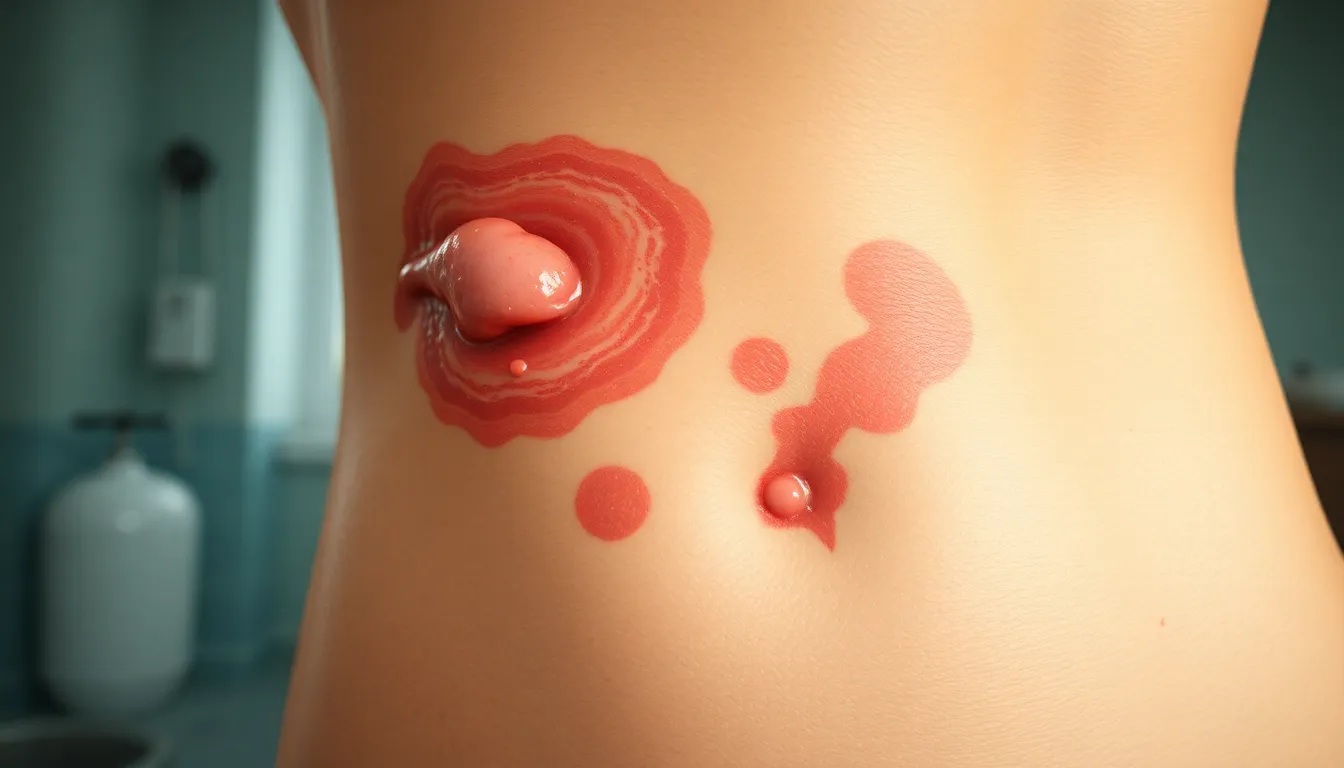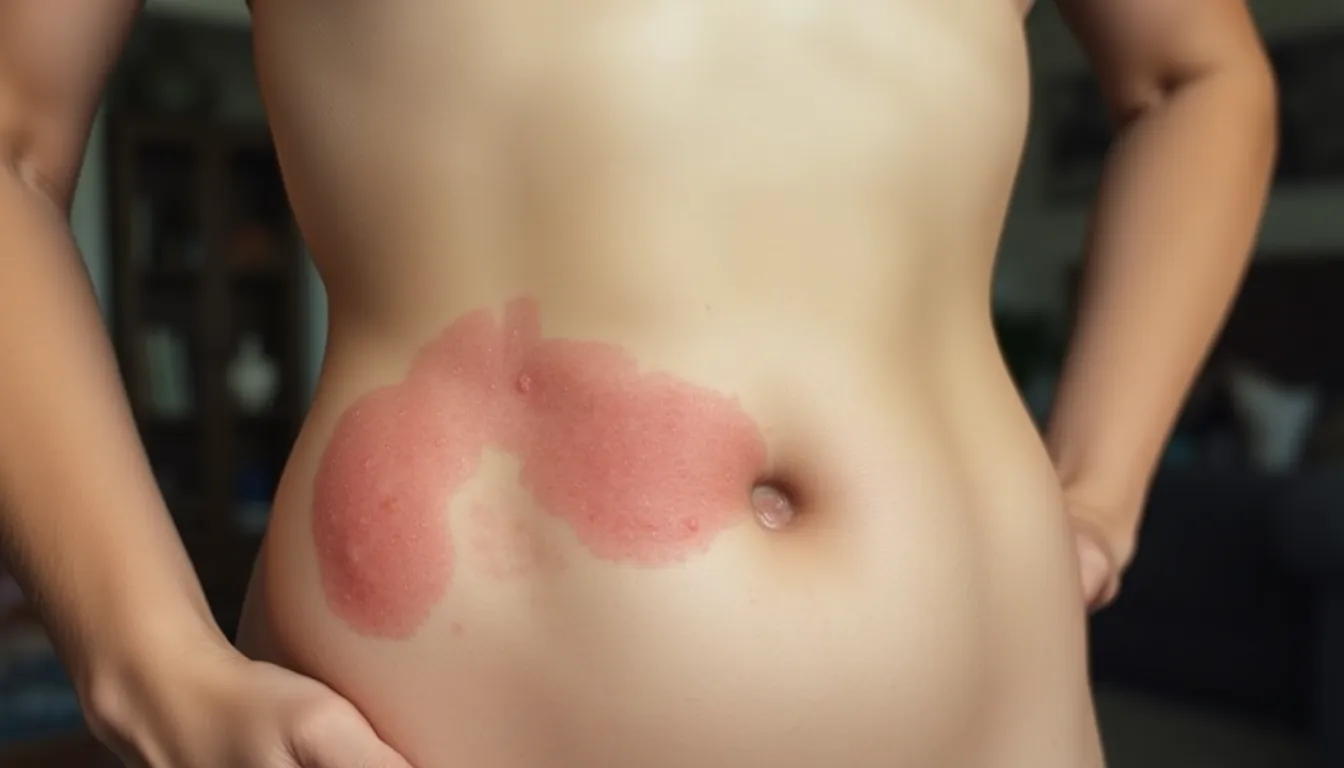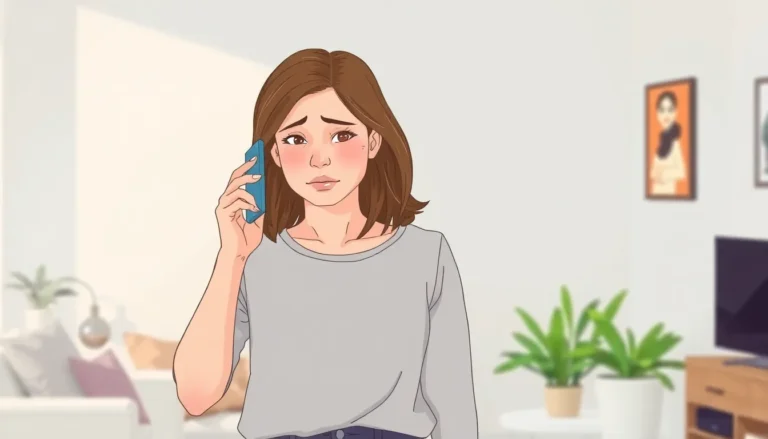Table of Contents
ToggleVulvar dermatitis might not be the hottest topic at dinner parties, but understanding what it looks like can save someone from a world of discomfort. This skin condition can throw a wrench in everyday life, leading to irritation that’s anything but pleasant. Imagine dealing with redness, itching, and flaking in a very sensitive area—definitely not a scenario anyone wants to find themselves in!
Understanding Vulvar Dermatitis
Vulvar dermatitis manifests through various symptoms. Redness often appears around the vulva, indicating inflammation. Itching accompanies the redness and can lead to discomfort. Flaking skin in the affected area may also occur, causing further irritation. Symptoms can vary in severity, making diagnosis essential for effective management.
Several underlying causes contribute to vulvar dermatitis. Allergic reactions to soaps, lotions, or laundry detergents often trigger flare-ups. Moisture from sweat or urine can exacerbate the condition, leading to skin breakdown. Hormonal changes during menstrual cycles or menopause may increase vulnerability as well.
Diagnosis typically occurs through a combination of physical examination and patient history. A healthcare provider inspects the vulva for characteristic signs, often ruling out other conditions. Patch testing might help identify specific allergens contributing to irritation.
Effective treatment options exist for vulvar dermatitis. Topical corticosteroids can alleviate inflammation and reduce itching. Antihistamines may provide relief from allergic reactions, while proper hygiene practices help maintain skin health. In some cases, lifestyle adjustments, such as wearing breathable fabrics and avoiding irritants, prove beneficial in managing symptoms.
Awareness of vulvar dermatitis can make a significant difference in quality of life. Understanding potential triggers allows individuals to take proactive measures. Seeking prompt medical attention ensures effective treatment and can lead to improved comfort.
What Does Vulvar Dermatitis Look Like?

Vulvar dermatitis presents through distinct signs that help identify the condition. Understanding these characteristics is crucial for effective management.
Common Symptoms
Redness and itching are the most prominent symptoms of vulvar dermatitis. In addition to irritation, patients may experience skin flaking or a burning sensation. Some individuals report discomfort during activities such as walking or sitting. Symptoms can vary in intensity and may worsen over time if exposed to irritants. Allergic reactions to products like soaps or lotions can heighten these feelings of discomfort. Increased moisture from sweat or urine frequently intensifies symptoms as well.
Visual Characteristics
Visual signs of vulvar dermatitis include redness often coupled with swelling of the vulva. Lesions may appear on the skin, reflecting inflammation and irritation. Additionally, flaky or scaly patches may develop, indicating dry skin. In some cases, blisters might occur, creating additional discomfort. Color variations depending on the skin tone can also present, making recognition important. Understanding these visual characteristics helps individuals seek timely medical guidance when necessary.
Causes of Vulvar Dermatitis
Allergic reactions often trigger vulvar dermatitis. Common irritants include soaps, lotions, and laundry detergents that can lead to inflammation. Additionally, moisture from sweat or urine contributes to skin irritation, exacerbating the condition.
Hormonal changes also play a role. Factors such as menstrual cycles or menopause can increase skin sensitivity, making some individuals more susceptible. Skin barrier dysfunction may occur, allowing irritants to penetrate more easily.
Infectious agents can further complicate vulvar dermatitis. Fungal infections, such as candidiasis, often lead to additional symptoms like itching and discharge. Bacterial infections may also present in tandem, causing further discomfort.
Environmental factors are critical too. Heat and humidity can aggravate existing conditions, while prolonged exposure to irritants increases the likelihood of flare-ups.
Personal hygiene products may also contribute to vulvar dermatitis. Scented products or those with harsh chemicals can undermine skin integrity, prompting irritation.
Chronic skin conditions, such as eczema or psoriasis, can manifest symptoms similar to vulvar dermatitis. These conditions necessitate tailored treatment approaches, depending on the underlying cause.
Understanding these causes allows healthcare providers to assess risk factors accurately. Identifying specific triggers aids in crafting effective management strategies tailored to individual needs. By recognizing potential sources of irritation, individuals can take proactive steps to mitigate symptoms and improve overall skin health.
Treatment Options
Vulvar dermatitis requires a tailored approach for effective relief. Both home remedies and medical treatments offer options for managing symptoms.
Home Remedies
Home remedies can provide initial relief from vulvar dermatitis symptoms. Applying a cold compress helps soothe inflammation and reduces itching. Aloe vera gel, known for its calming properties, can also hydrate and heal irritated skin. Incorporating unscented, gentle soaps into daily hygiene routines minimizes irritation. Wearing loose, breathable cotton underwear helps reduce moisture and heat buildup, which may worsen the condition. Herbal remedies, such as chamomile or calendula, have soothing effects and can alleviate discomfort.
Medical Treatments
Medical treatments offer additional support for managing vulvar dermatitis. Dermatologists often recommend topical corticosteroids to reduce inflammation and alleviate itching. Antihistamines may help control allergic reactions, providing further symptom relief. In cases linked to infections, antifungal or antibacterial creams become essential. Healthcare providers might suggest prescription-strength treatments depending on symptom severity. Regular follow-ups ensure effective management and adjustments to treatment plans as necessary.
Vulvar dermatitis can significantly impact daily life through its uncomfortable symptoms. Recognizing its visual signs like redness, flaking, and swelling is vital for individuals to seek timely medical advice. Understanding the condition’s triggers allows for proactive management and effective relief strategies. By addressing underlying causes and adopting appropriate treatment options, individuals can enhance their quality of life. Increased awareness and open conversations about vulvar dermatitis can lead to better understanding and support for those affected. Taking control of this condition is possible with the right knowledge and resources.




